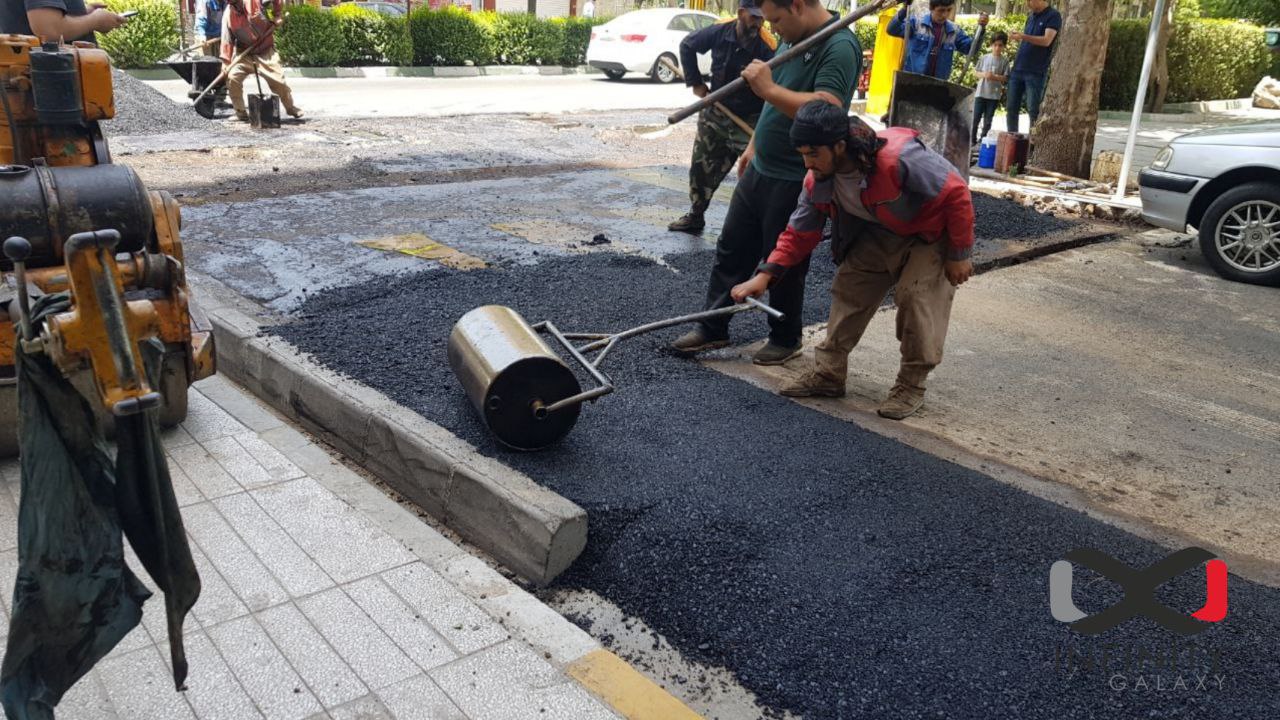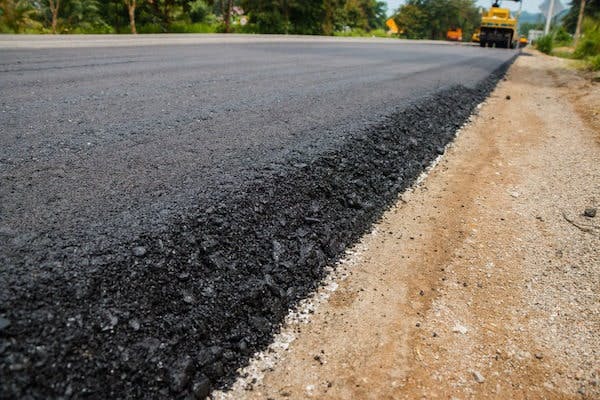Unlocking the Secrets of Hot Mix Asphalt Innovation
Discovering the midsts of hot mix asphalt modern technology discovers a globe where thorough processes and precise formulas converge to form our roads and framework. The fusion of aggregates, fillers, and binders isn't simply a construction job but a calculated orchestration of resilience and performance.
Value of Warm Mix Asphalt
Hot Mix Asphalt plays an essential duty in modern facilities development because of its durability and cost-effectiveness. As the most generally made use of leading material for roads, freeways, and car park, Warm Mix Asphalt supplies a range of advantages that contribute to its value in building and construction projects. One crucial benefit is its ability to endure hefty website traffic loads and extreme weather, offering a dependable and resilient surface area for transport networks. Additionally, Hot Mix Asphalt is economical in both first building and construction and long-term maintenance, making it a preferred choice for lots of facilities tasks.
The sturdiness of Hot Mix Asphalt stems from its make-up, which consists of aggregates, binder, and filler materials that are very carefully chosen and blended to satisfy specific efficiency requirements. On the whole, the significance of Warm Mix Asphalt in facilities development can not be underrated, as it continues to be a keystone of contemporary building practices.
Parts of Asphalt Mixes
The composition of asphalt mixes includes thoroughly picked aggregates, binder, and filler products that are essential for attaining specific efficiency needs. Aggregates are the key component of asphalt mixes, supplying strength and stability. These accumulations can be all-natural, such as gravel or smashed rock, or synthetic, like recycled products from old sidewalks. The binder, typically bitumen or asphalt concrete, holds the accumulations together and supplies adaptability and resilience to the mix. The choice of the binder is crucial as it directly influences the mix's efficiency in different weather. Fillers, such as hydrated lime or Portland concrete, are made use of to boost the mix's workability and aging resistance. Angled Parking.
The combination and proportion of these elements play a substantial role in figuring out the top quality and performance of the asphalt mix. Engineers thoroughly make the mix to fulfill particular needs, considering elements like website traffic volume, environment problems, and pavement lifespan. Appropriate choice and harmonizing of accumulations, binder, and fillers are essential for creating resilient, resilient asphalt sidewalks.
Combining and Manufacturing Techniques

As soon as the aggregates are selected, the binder, commonly asphalt concrete, is included in bind the materials together. The binder's quality and quantity substantially affect the mix's versatility, resistance, and stamina to environmental elements. Additionally, fillers like hydrated lime or Portland cement might be included to boost certain attributes of the asphalt mix, such as its workability or wetness resistance.
During manufacturing, the accumulations and binder are heated up, usually between 250-325 ° F(121-163 ° C ), to facilitate blending and guarantee proper coating of the accumulations. The blending process must be thorough to attain an uniform mix that promotes the resource wanted performance qualities of the asphalt. Various techniques, such as set blending or drum mixing, are employed to attain high-quality and regular asphalt mixes for construction tasks.
Elements Affecting Asphalt Performance
Variables influencing asphalt efficiency include a variety of variables that impact the toughness, durability, and overall quality of asphalt pavements. One key aspect is the quality of materials made use of in the asphalt mix. The type and source of accumulations, the binder quality, and the ingredients all play a significant function in establishing the performance of the asphalt sidewalk. The rank of aggregates is vital as it affects the mix's resistance, stability, and workability to splitting and rutting.

Environmental problems also affect asphalt performance. Temperature level variations, wetness seepage, and web traffic lots can all impact the architectural integrity of the pavement. Layout considerations, such as pavement density and drainage, are vital in ensuring the long-lasting efficiency of the asphalt pavement. By very carefully taking into consideration these designers, variables and professionals can maximize asphalt efficiency and boost the service life of pavements.
Sustainable Practices in Asphalt Technology

In addition, the advancement of warm-mix asphalt (WMA) innovations has gained grip over the last few years. WMA allows for the production and positioning of asphalt mixes at lower temperature levels compared to conventional hot-mix asphalt, resulting in lowered energy consumption and greenhouse gas exhausts. Moreover, using porous asphalt blends can help mitigate stormwater overflow issues by permitting water to infiltrate through the sidewalk and into the ground, advertising natural water purification and charge processes. By carrying out these sustainable methods, the asphalt industry can add to building a much more environmentally pleasant and resilient framework network.
Final Thought
To conclude, warm mix asphalt modern technology plays an essential function in contemporary facilities advancement as a result of its link durability and cost-effectiveness. By thoroughly balancing elements, utilizing appropriate mixing methods, and thinking about different aspects, designers can produce premium asphalt mixes that endure rush hour loads and harsh climate condition. Welcoming lasting methods, such as utilizing warm-mix technologies and recycled materials, further boosts the ecological kindness of asphalt innovation.
Mixing and production strategies in hot mix asphalt technology involve the specific mix and processing of accumulations, binder, and fillers to develop a long lasting and high-performance asphalt mix.Factors affecting asphalt efficiency include a range of variables that influence the longevity, durability, and overall quality of asphalt sidewalks. Sustainable methods in asphalt modern technology include numerous efforts aimed at minimizing the environmental influence of asphalt production and paving procedures. By integrating redeemed asphalt pavement (RAP) and recycled asphalt tiles (RAS) into brand-new asphalt mixes, the market can significantly lower the consumption of raw products and energy, while likewise lowering garbage dump waste.
WMA permits for the production and positioning of asphalt blends at lower temperature levels compared to conventional hot-mix asphalt, resulting in lowered energy usage and greenhouse gas emissions.
Comments on “Hot Mix Asphalt Paving: Elevating Commercial Parking Lot Specifications”